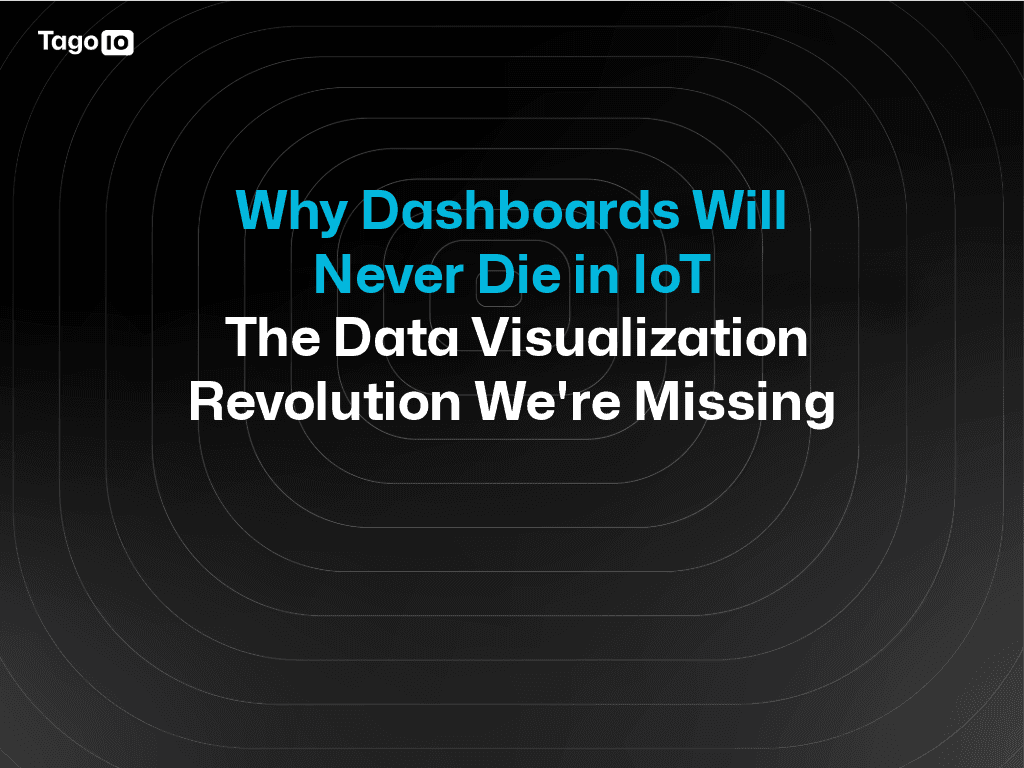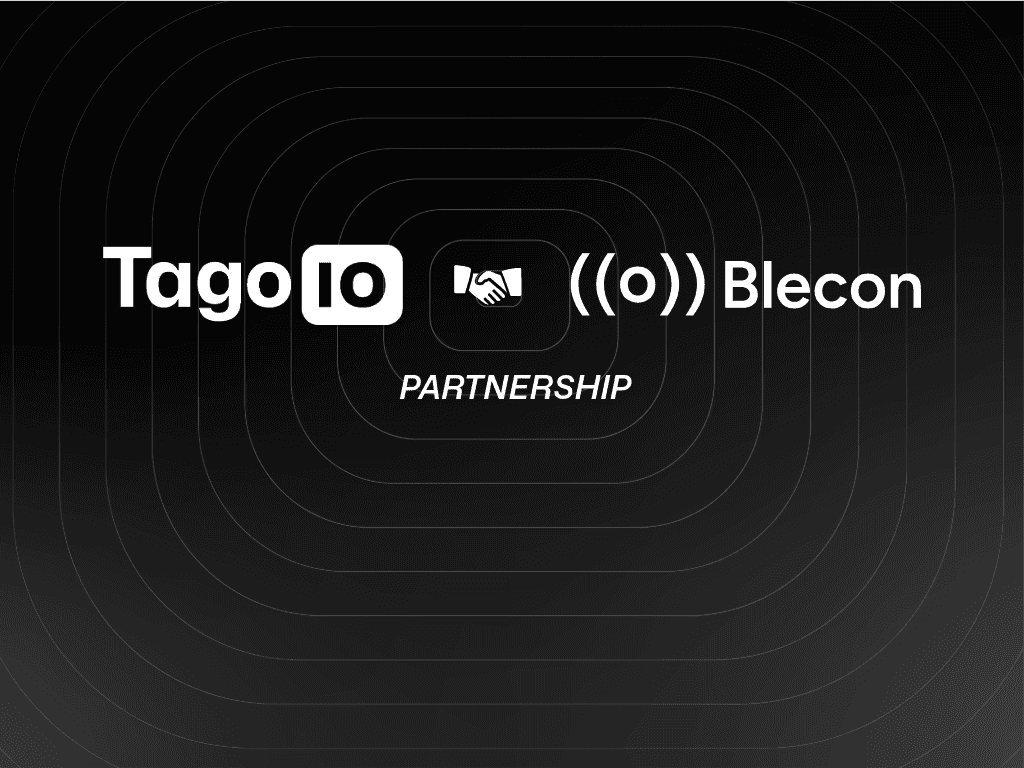Blog
Tech Insigths
IoT in Logistics: How sensors improve operations
In this blog, learn how IoT sensors are used in logistics to improve efficiency, reduce costs, and enhance customer satisfaction. Explore real-world use cases and the benefits of implementing IoT in the logistics industry.

TagoIO Team
Jun 20, 2022



For a company to have an efficient logistic operation, possibly the most important resource is information as it’s impossible to analyze processes and improve upon them without that information. That’s why IoT (Internet of Things) fits like a glove for this industry.
In this post we are going to talk about the ways that the integration of IoT in logistics will improve efficiency, while also increasing customer satisfaction in general.
“Curiosity: the term Internet of Things was coined with the application of sensors with logistic in mind”
The first time we heard about IoT was back in 1999 when Kevin Ashton, a British technologist working on the Procter & Gamble (P&G) supply chain management project, tried to find a way of using RFID technology to track inventory through the company’s global supply chain. He said “If we had computers that knew everything there was to know about things—using data they gathered without any help from us—we would be able to track and count everything, and greatly reduce waste, loss, and cost. We would know when things needed replacing, repairing, or recalling, and whether they were fresh or past their best.”
Key components of logistics
To understand how IoT can help logistics, let’s talk about some components that are important. In a more simplified manner, we can divide logistics into three components: transportation, inventory management, and warehousing. Each of these components plays a vital role in the overall efficiency of the logistics process, and it’s interesting to see how vital IoT truly is for them.

Transportation
Transportation is the first component of logistics. It is responsible for getting goods to the warehouse and from the warehouse to other places, and to get better results from this component, companies need to have a solid understanding of their shipping routes and the types of transportation available to them.
Inventory Management
Inventory management is the second component of logistics. It is responsible for keeping track of the inventory and ensuring that it is properly stocked. To optimize inventory management, companies need to have a good understanding of their product mix, as well as the demand for their products.
Warehousing
The third and final component of logistics is warehousing. It is responsible for storing goods and materials, and warehousing companies need to be well versed in their storage, as well as having the know-how to manage their employees.
How can IoT improve efficiency through information
IoT transforms normal objects into real-time information, reading the data given by assets that already have sensors, for example trucks with GPS (global positioning system), or by attaching sensors into assets that do not already have them. In this latter situation, you will need an IoT edge device that sends you the values already preprocessing it.
As articulated by the consulting firm Deloitte, IoT was only made possible by the general and inexpensive availability of three enablers:
Universal and easy-to-use communication networks, some of them even free of contract. Some examples of such networks are WiFi, Cellular, NB-IoT, and LoRaWAN.
Powerful and easy-to-integrate sensors and actuators, inspired by the maker scene.
Scalable cloud services for processing large amounts of data.
Transportation solutions
GPS, ultrasonic cargo sensors, and telematics systems are all technologies that are already being applied and helping the market.
From tracking trucks to calculating the best cost-benefit route, GPS is an essential tool, and this is just the beginning, as companies are already developing automated trucks. Those trucks, in theory, could follow a fleet of other trucks with only one driver leading the way, or even do the entire trip entirely by themselves.
Ultrasonic cargo sensors can inform the driver if a trailer is loaded or empty, however, this information is only binary and it may give the driver some false information depending on what it has inside, but it can still save time. With the use of more sophisticated sensors it is possible to obtain continuous information of the load, which increases the value of the data.
A telematics system can provide much more detail, not only if it’s loaded or empty but also things like the products that are inside and their situation, and for the truck it can track the fuel use, low tire pressure, speed, and much more. This can even extend itself, possibly being able to identify future problems and saving additional money from minimized maintenance costs.
Another important feature in some applications is the control and monitoring of temperature of the load, as such implementation can reduce wastes caused by improper conditions achieved during the transportation or storage processes. As stated by a report from Paack, temperature logs are necessary since most food cargo needs to be in a specific temperature during the whole process.
Inventory Management solutions
For Inventory Management, IoT can be used to track products so you will know exactly where it is and how many you have in stock. This also means that it can detect when a product is running low so that you can restock before completely running out of it.
All of this can be made through smart labels that utilize passive radio frequency identification (RFID) to inform the system instead of having to scan all of the products individually when they enter, or leave. All the data is collected automatically, of course, and although today this technology is still considerably more costly than a normal system, with time it will become far more affordable.
Controlling a warehouse
Thousands of people entering a warehouse is not odd for a large corporation such as Amazon, however, controlling who is entering and leaving, and what those people are doing there, is not an easy task. More recently, the warehousing sector has contributed heavily to the growing demand of robots, some examples including automated guided vehicles (AGVs) for fixed paths, and autonomous mobile robots (AMRs).
Smart cameras can identify people inside the warehouse, and alert security if something out of the ordinary or unsafe is occurring. IoT, in this case, can even prevent accidents from happening through the use of smart machines and sensors.
Customer solutions
The benefits of IoT are not only for the company, but also for the customer. Tracking devices, for example, will give more transparency during the delivery process. For motion or temperature-sensitive products, sensors will send the data directly to the cloud, informing of any irregularity. So, when the cargo arrives the customer already knows if it is in perfect condition.
These logs are also very important since extreme variation can damage the product and ruin it, depending on the storage and transportation conditions specified by manufacturers.
When well designed, this process can be executed without human contact, which makes the information significantly more reliable, especially if the company stores the information in the blockchain, as then there is no possibility of someone altering it.
Overall, there are several types of sensors available in the market that can be used to improve the process in logistics. The end solution normally includes the analysis of data provided by more than one type of sensor, and some examples of sensors provide the following information:
Temperature
Humidity
Tilt
Accelerometer / vibration
Magnetic field
Light
Indoor location based on BLE (bluetooth), UWB (ultra-wideband), RFID
Outdoor location (GPS, cell tower triangulation ).
IoT platforms
In order to make sense of all of the data captured by these sensors, it is fundamental to count on a reliable IoT platform and well designed algorithms that are able to improve performance and reduce costs. TagoIO has been used in thousands of IoT applications due to its easy to use and powerful dashboards, analytic and report capabilities, user management, and other essential tools needed to build a superior application for logistics.
TagoIO provides a list of more than 480 IoT end-devices already integrated with networks based on LoRaWAN, Sigfox, cellular, satellite, Wi-Fi, BLE, Zigbee, and other technologies. It provides a wide range of highly customizable visual widgets for indoor and outdoor locations, and also includes geo-fences, alerts, and reports. Another key feature expected from a great platform like TagoIO is the capability to easily integrate solutions with external services through powerful APIs (Application Programming Interface) to exchange data with ERPs (Enterprise Resource Planning), such as SAP, Oracle, and others.
“New technologies and customer behaviors are radically reshaping the logistic landscape in 2022”
As companies strive to future-proof their logistic process moving forward, leaders are learning that they need to move their focus to build a more flexible and responsive workflow process.
With so many interconnected devices, data can easily be shared and analyzed for better decision-making, so now it’s all up to us to use the data and revolutionize the world. Still, however, companies need to invest in their capabilities and process to accommodate new consumer demands while surpassing the competition. Learn more about how TagoIO can help in this sector here.

TagoIO Team


